It’s been quite a while since I 1) did any Boullework and 2) made a public presentation.

The last week or two I’ve been going through the exercises I’m demonstrating this coming Saturday to the SAPFM Blue Ridge Chapter, everything from making tordonshell to cutting some new Boullework panels.

When I assembled the metal and tordonshell packet and set about to sawing, the magic just wasn’t there. On a normal day once I get in the rhythm I can go for an hour or longer per saw bade, sometimes even half a day. But not this particular day. Sigh.

I was snapping blades like I was trying to break pasta. It took me four hours to saw a 1/2″ circle (and a pretty raggedy one at that) and I broke more than two dozen blades in the process. When I swept up the pile was truly impressive, but my camera was not handy.

Bad posture? Bad lot of blades? (it really does happen some time) Packet too thick? Rusty antiquated shoulder? Vision problems? (well, that is a given)
Some days are just like that. I’ll aim to get the bear tomorrow.
Last month I had the delightful experience of attending a superb Blue Ridge Chapter meeting for the Society of American Period Furniture Makers held in Fredericksburg, Virginia, organized by my friend Steve Dietrich and his wife Barb (if you are not yet a member of SAPFM, why not?).
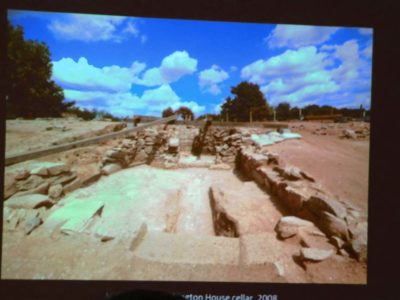

The topic was the newly reconstructed childhood home of GeoWashington, Ferry Farm, just outside of Fredericksburg, under the auspices of The George Washington Foundation. Or, to put it more precisely, the topic was and the presentations were about the inspired program of replicating the furniture for the house. Since the written inventories were all that documented the house furnishings the Foundation commissioned dozens of pieces “of a type” that would have been probable to the household, pieces from Williamsburg, Fredericksburg, Richmond, etc. Several of the woodworkers who created the replicas were on-hand to describe and demonstrate their processes of making, then were later in attendance as we toured the home. Literally every piece of furniture in the house was made in the style and manner of what would have been found there in 1750. I will post about the house and furnishes themselves soon.
I apologize for the pictures, I was just taking them from my seat in the hall.
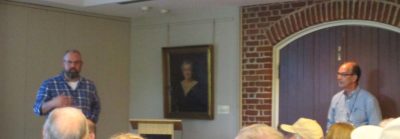
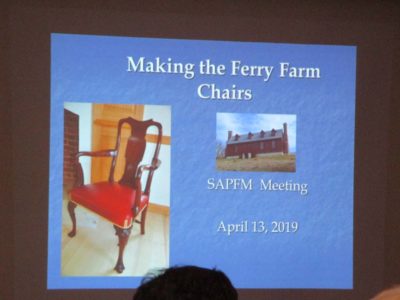
Among the presenters and presentations were Calvin and Ben Hobbs discussing the dozen dining chairs they made, a project with the logistical complications of being fabricated in North Carolina but carved in Kansas.


Kaare Loftheim presented on behalf of Brian Weldy about the diminutive tea table made at the Williamsburg Anthony Hay cabinet shop.
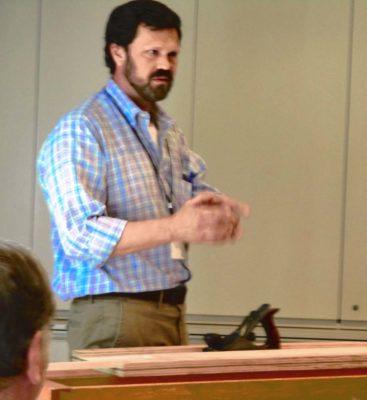
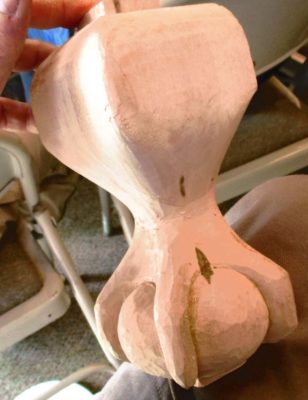
Richmond furniture maker Reid Beverly discussed the trials of fabricating a complex upright secretaire with boodles of compartments made from ultra thin SYP stock, and the frustrations of carving southern yellow pine. He passed around a model in tulip poplar of the feet that were carved for the cabinet.

Another Williamsburg piece was this built-in corner cabinet from the joiner’s shop.
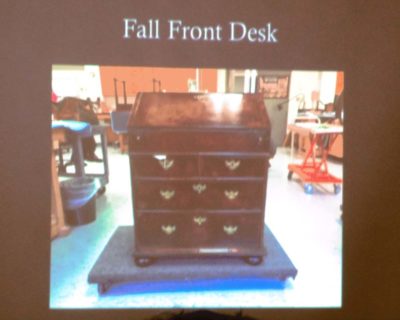
It was great to see some younger makers there as well. One of them made this desk,


and another this drop leaf table. Their work was superb.

Jeff Hedley and Steve Hamilton assembled their chest of drawers right in front of our eyes.

Wrapping up the morning(!) session Steve Dietrich covered the seven pieces he built, including several rope beds brightly painted.
Congratulations to The George Washington Foundation for such an inspired strategy (and the resources to pull it off), to the makers of the faithful representations of furniture making in the era, and Steve and Barb for a terrific weekend.
For the final session of the SAPFM Tidewater Chapter Spring Meeting I was asked to talk about “matching color” but I took the liberty of broadening the topic to “matching appearance” which I think is more useful. Though my demonstration component did indeed focus on understanding the perception of color and its modification, it occurred within the larger context of “appearance.” Normally this is a topic I like to spend a week covering, so in 90 minutes I barely got to the highlights. In fact, at this fairly late date I have decided to add a full chapter on the topic to my Period Finisher’s Manual book for Lost Art Press.

There are many aspects of appearance of interest to woodfinishing and I addressed each and their interrelation briefly. One point I made repeatedly is that if matching color is a critical component of any projects, that must be accomplished in the finishing layers (or between them), NOT in staining the wood.

Trying to match any color via the manipulation of wood stain on the bare wood surface is a fool’s errand. To get to where you want to go, you must know where you are starting. And that means the wood surface must be sized with enough coating to establish the base appearance and color.
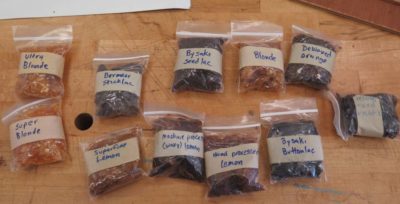
There are times where the selection of the coating itself is a critical component of achieving a specified color.
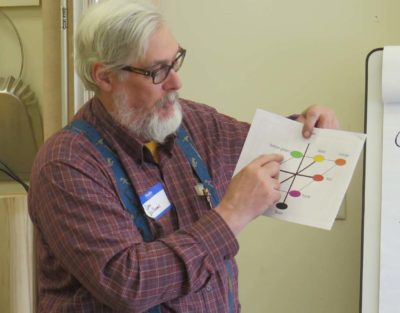
Once you get to the point of manipulating the coloration, I believe that the traditional color wheel is inadequate to the task. Instead I prefer a different conceptual model for color, and that model is known as the “L,a,b” color system. I will not go into detail here as to how I use this system in my own color work, suffice to say it is functionally a subtractive system i.e., if something is too red, I add green, if it is too yellow I add blue, to neutralize the excess color.

Adding tonality to the surface appearance can be achieved through tinting the coating itself with dyes or pigments. Here I am using some very intense organometallic synthetic dyes that were originally created for industrial and automotive paints, if I recall correctly. These are Orasol dyes and have a somewhat peculiar palette to select from, and are available to the finishing trade at Olde Mill.


The means of imparting coloration are many, and once again I only use color in or in-between the finish. One of the simplest and most effective techniques — and historically accurate to boot — is a light glaze of asphaltum.

And speaking of glazing, I spoke for a few minutes about how to determine whether or not you have good glazing brushes.
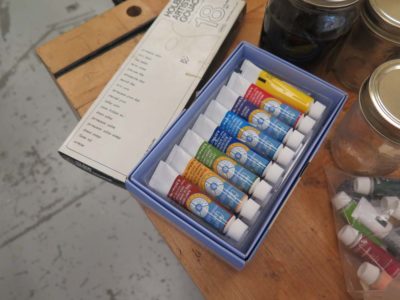




Another glazing technique I demonstrated was using artists’ watercolor paints known as goauche with a waterborne shellac binder that I made right there in the meeting. If you do not get the color or tonality correct, just wipe it off with a damp rag and start over again. You have perhaps a half hour to do this before the waterborne shellac sets, and it is very tenacious once dry.
And then it was time for everyone to go home.
One of the delightful happenstances in my past was my intersection with the Society of American Period Furniture Makers. Not only is its annual journal American Period Furniture a premier resource for furniture makers, the fellowship and learning among its members is a balm to the soul and a source of inspiration. In addition to the national organization there are almost two dozen regional chapters, three of whom can count me as among their company. Any member to the SAPFM can attend any chapter meeting. Most chapters meet twice a year, I believe. If you have any interest in the topics (and I have to assume you do if you read this blog) by all means join SAPFM. It will be a blessing to you as it is to me.
A couple weekends ago I drove down to Virginia swamp country for the Spring meeting of the Tidewater Chapter, and the program was once again excellent. There were three primary presenters for this meeting and amazing project updates from a couple more.
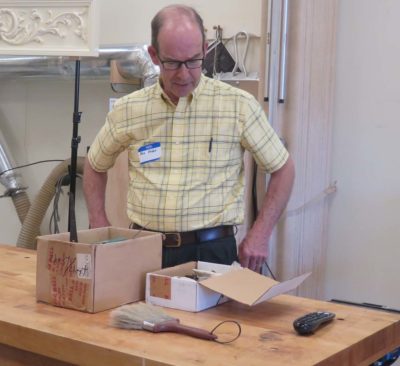
The morning started with Ben Hobbs discussion and demonstration of both vintage and contemporary manufactured hardware, everything from fasteners to hinges, handles, and locks.
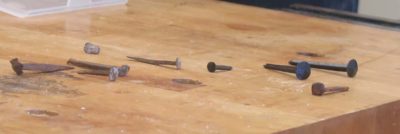

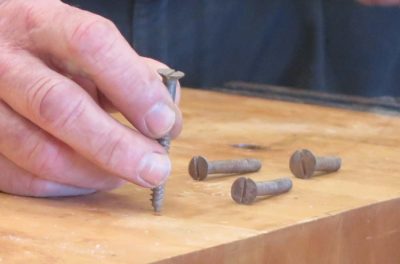
Like many (most?) of us Ben is loathe to discard anything useful, and given the numbers of furniture pieces that have passed through his shop and under his hands he possesses a large quantity of vintage hardware.

Next came a couple of sessions with this year’s Cartouche Award winner Ray Journigan, focusing on creating and replicating carvings.
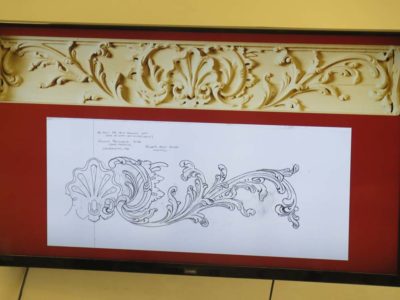
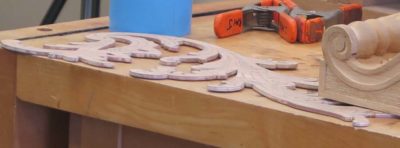
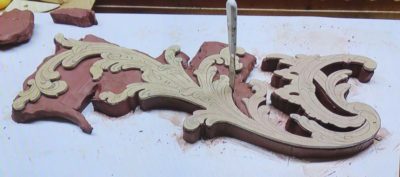


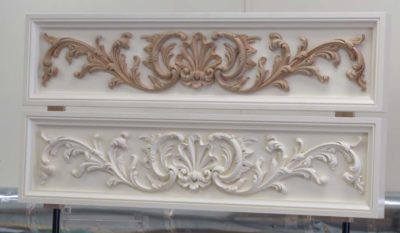
He walked us through the entire process, from making the drawings/tracings, through a thin wood pattern, and then the sculpting itself. It might be a small thing, but I was thrilled to see him model the forms in sculpting clay in advance of addressing the wood, to inform his eyes and hands as to the progression of the carving.


He then walked us through a demonstration of making rubber molds and resin castings of his carvings. As an old molding-and-casting guy myself I was fascinated.
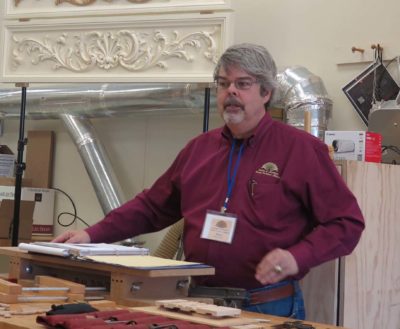

The final presenter before me was Steve Dietrich a furniture maker in Fredricksburg, Virginia, with an update on the project to recreate George Washington’s boyhood home. The domicile is being built from scratch based on the archaeological findings on the site, and Steve is one of the folks replicating the furnishings, including several bed frames and a blanket chest. I believe he is making a half dozen or so pieces. He rightly describes the project (as a whole) as the undertaking to create a national treasure. And he is right.
The I took the stage. Stay tuned.
















































Recent Comments